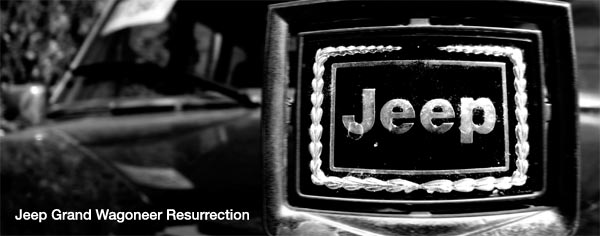August 18-22, 2011
Certification Loomed on the horizon the way a cold front plows up a bank of thunderheads in the distance; no escape but to push headlong into it. With the Safety and E-test check booked for the 23rd, I gave the beast a pretty thorough inspection and whipped up a short list of things I would need to complete over the next couple of days.
I street legalized all the Bondo work and got most of the bare steel painted for the trip north (should I get that far), as well as reinstalling any trim that needed to go back on. I pillaged the old TJ bumper from storage and welded up a few quick mounts to hold it in place as a temporary bumper while my real one was being fabricated.
An electrical check revealed my rear side marker signals didn’t work; with the multimeter reading about 2 volts instead of the required 12. Without the time to do proper continuity tests to find where 10 volts either escaped or couldn’t pass through a bad connection, I rigged up a splice to piggyback the power off the more robust tail light signal circuit. It meant they didn’t alternate blinking but it meant they now were legal.
On the evening of the 22nd, about 16 hours before my test was booked, I took the vehicle for a quick spin to warm it up past driveway idle; with the intent of finding any weak points that otherwise wouldn’t appear until a road test.
The test worked.
When the power steering fluid began warming up, the pressure in the steering system increased to reach its normal operating temp/pressure. This caused a small pinhole leak in the low pressure line to begin dripping in a fairly constant 1 drip per second pattern. I reached in and gave the steel line (where it exits the box) a slight wiggle and it ruptured; bleeding itself out all over the garage floor like a mortally wounded Buck. Seeing as how it was passed closing time of Canadian Tire, I proceeded to dismantle the low pressure side of the system and took stock of what I needed.
In the morning, I slipped over to CT early to get the best start on my day. At T-6:00 I was told they didn’t stock parts for the Saginaw Steering system, the box that lived under just about every 4wd truck pre-1994 (and possibly after). Since I had the piece with me the Desk-Guy and I went to their fuel and brake fitting section and paired up a nearly identical match to the old fitting. I didn’t care that the line was intended for a GM sending unit, it bolted right up and I had steering in under an hour after purchase. I refit with new hose, clamps, and o-rings and then topped up the fluid. A few last minute dustings made it look semi-presentable before my brother in law came to pick it up for its appointment.















